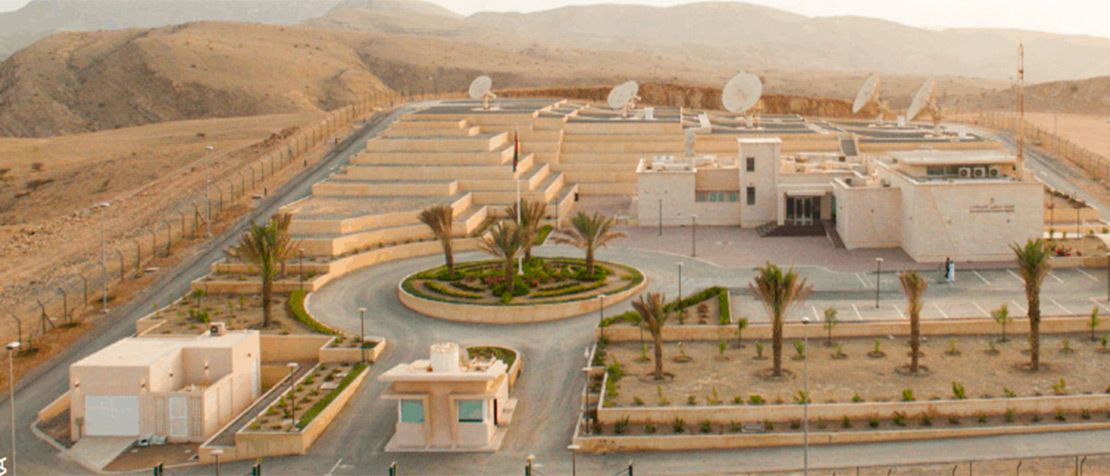
Emerging challenges for satellite spectrum monitoring: Opinion
In recent years space has experienced an exponential growth, at a global level, of new platforms and services, causing an inherent threat to frequency spectrum availability and security.
Current surveys shows this trend is not slowing down.
The rapid rise in non-geostationary (non-GSO) constellations and associated earth stations, both fixed and mobile, the hybridization of communication platforms, the ever-increasing complexity of very high throughput satellites (VHTS) and, last but not least, more nations having the capability to access space through cheaper technology and launchers, should be a concern to the regulatory authorities. More generally, it should be a concern to the entire space industry.
“Mobile and airborne sensors will be the tools of the future allowing for distributed measurements over vast or hardly accessible territories.”
Issues such as frequency spectrum being more and more congested, leading to a potential increase in interferences and less-than-scrupulous firms accessing space without proper coordination, thus jeopardizing orbits with the risk of exponential debris creation, are two of the main concerns.
The need for new solutions
National administrations should strive to provide radio space monitoring capabilities to guarantee reliable licensing and orbital usage, as well as interference-free operation for all the different services.
Basic fixed radio-frequency measurement sites are no longer enough to ensure the thorough test and verification of non-GSO and VHTS space stations.
New solutions, sensors and measurement techniques need to be introduced. Mobile and airborne sensors will be the tools of the future allowing for distributed measurements over vast or hardly accessible territories.
As an example, the measurement of emissions from GSO and non-GSO space stations to verify compliance with the ITU equivalent power flux density (EPFD) recommendation is causing a lot of head scratching.

New algorithms and measurement techniques will have to be implemented, as well as new hardware capable of tracking fast-moving space objects.
The capability to measure and compensate Doppler Effects due to the objects’ velocity, is definitely one of the main focal points. Accurate time stamping of data acquisition would allow correlation of data collected from a number of different ground stations facilitating the analysis tasks.
“National administrations should strive to provide radio space monitoring capabilities to guarantee reliable licensing and orbital usage.”
Future space constellations will add another aspect to the monitoring mission that have so far been consigned to a handful of space stations. This includes a dynamic and complex structure with transient conditions that could be detected only by deploying a much higher number of sensors.
As this is evidently not economically viable, more ingenious ways need to be used. The ability to collect and correlate data not only limited to the radio frequency (RF) elements, scalable and transportable sensors that could be dynamically reconfigured, and on-board signal processing capabilities are among the most promising developments to mitigate this.
The foreseeable congestion of the near and far orbit
The foreseeable congestion of the near and far orbit also brings more issues on the data collection and analysis front. Companies are announcing non-GSO constellations with hundreds if not thousands of satellites; this will reflect also in the amount of monitoring and control data each administration will have to collect.
It is not unrealistic to think that administrations will be quickly overwhelmed by the burden of the collection and analysis of data, leading to much lengthier licensing processes or, in some cases, more deregulation.
Machines will have to support these operations, with a considerable interest in developing artificial intelligence (AI) capabilities, to correlate and predict environmental conditions in order to prevent service degradation, interferences or even collisions.
Centralization of collected data will be paramount, especially with non-GSO constellations only partially covering populated areas.
A new level of cooperation between administrations will have to be implemented to consolidate the collection and analysis of the data, and facilitate the correlation between similar events on opposite sides of the globe and prediction of future happenings.
It does not take a scientist to realize that the aforementioned challenges will need considerable investments from national administrations, both in terms of infrastructure and knowledge.

Selecting end-to-end solutions that can cover the entire scope of the agency mission with a defined training path and team support over longer periods after commissioning, would be a basic need.
Cooperation between administrations is also a possible way forward, similar to what was put in place many years ago by the European Conference of Postal and Telecommunications Administrations (CEPT), allowing administrations to share the costs of deploying such capabilities.
In addition, new technologies allow for scalable and distributed systems that could isolate databases from different administrations maintaining a common hardware and software infrastructure.
Adopting these methods, structured procedures, and a rigorous measurement process, will help national administrations address the new and growing threats to frequency spectrum security and availability.
*This article is one of several commissioned by ITU’s Radiocommunication Bureau to be published in the recent ‘Evolving satellite communications’ edition of ITU News Magazine. Views expressed do not necessarily reflect those of ITU.
